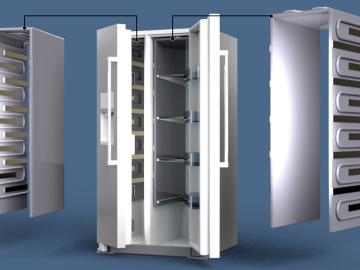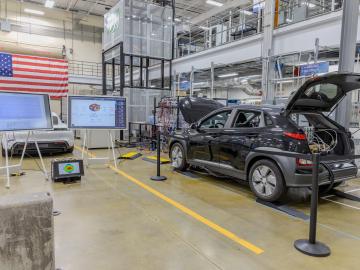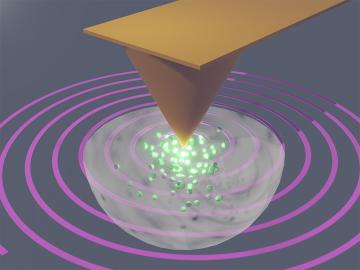
Filter News
Area of Research
News Type
Date
News Topics
- 3-D Printing/Advanced Manufacturing (3)
- Artificial Intelligence (3)
- Big Data (4)
- Bioenergy (1)
- Biology (3)
- Buildings (4)
- Chemical Sciences (5)
- Clean Water (3)
- Composites (2)
- Computer Science (3)
- Critical Materials (1)
- Emergency (1)
- Energy Storage (4)
- Environment (8)
- Fossil Energy (1)
- Grid (1)
- High-Performance Computing (3)
- ITER (1)
- Machine Learning (5)
- Materials (3)
- Materials Science (3)
- Mathematics (2)
- Neutron Science (1)
- Nuclear Energy (1)
- Polymers (1)
- Simulation (4)
- Summit (1)
- Transportation (3)
Media Contacts

ORNL scientists develop a sample holder that tumbles powdered photochemical materials within a neutron beamline — exposing more of the material to light for increased photo-activation and better photochemistry data capture.

ORNL researchers used electron-beam additive manufacturing to 3D-print the first complex, defect-free tungsten parts with complex geometries.

A technology developed by Oak Ridge National Laboratory works to keep food refrigerated with phase change materials, or PCMs, while reducing carbon emissions by 30%.

Groundwater withdrawals are expected to peak in about one-third of the world’s basins by 2050, potentially triggering significant trade and agriculture shifts, a new analysis finds.

Inspection technology developed by Oak Ridge National Laboratory will help deliver plasma heating to the ITER international fusion facility.

An international team using neutrons set the first benchmark (one nanosecond) for a polymer-electrolyte and lithium-salt mixture. Findings could produce safer, more powerful lithium batteries.

A team of researchers at ORNL demonstrated that a light-duty passenger electric vehicle can be wirelessly charged at 100-kW with 96% efficiency using polyphase electromagnetic coupling coils with rotating magnetic fields.

To capitalize on AI and researcher strengths, scientists developed a human-AI collaboration recommender system for improved experimentation performance.

Research led by ORNL’s Marti Checa and Liam Collins has pioneered a groundbreaking approach described in the journal Nature Communications that enables visualizing charge motion at the nanometer level, or one billionth of a meter, but at speeds thousands of times faster than conventional methods.

ORNL climate modeling expertise contributed to a project that assessed global emissions of ammonia from croplands now and in a warmer future, while also identifying solutions tuned to local growing conditions.


